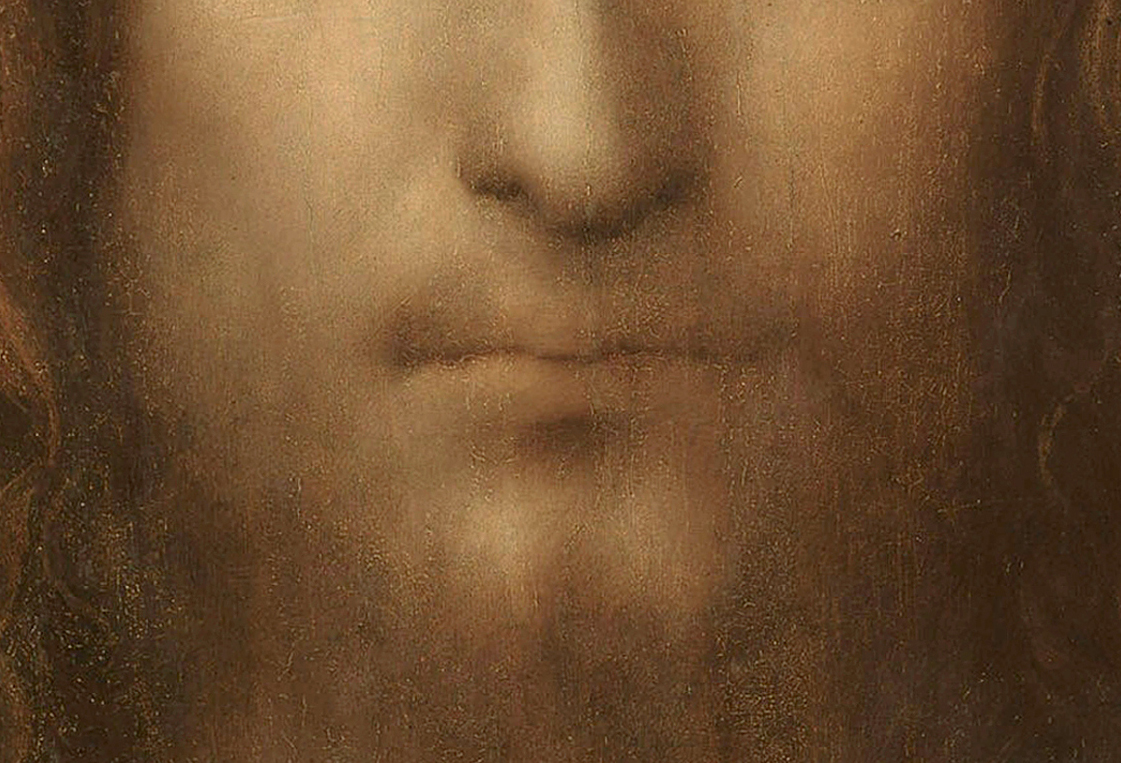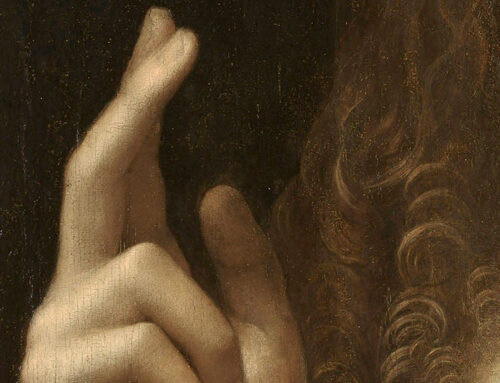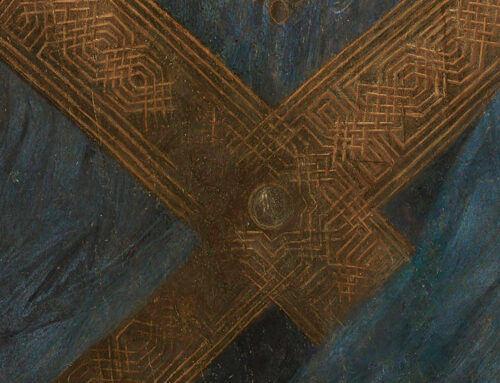Sfumato Technique and Its Significance
Leonardo’s sfumato technique involves the delicate and seamless blending of colors and tones to create soft, gradual transitions between light and shadow. This method eliminates harsh lines and gives a smoky appearance, lending a mysterious, almost divine quality to the painting.
In “Salvator Mundi,” the subtle gradations of light and shadow on Christ’s face, hands, and orb not only imbue the figure with a sense of volume and solidity but also evoke a sense of spiritual presence. The face appears both present and elusive, engaging the viewer in a contemplative dialogue.
Esoteric Interpretations
The sfumato technique can be interpreted as a visual representation of the dual nature of reality, blending the physical and the spiritual, the known and the unknown. This aligns with esoteric principles that view existence as a continuum between material and ethereal realms.
The way light falls on the figure and the orb can symbolize divine illumination or enlightenment, suggesting that spiritual knowledge and wisdom are not always clear-cut but rather revealed gradually, akin to the unfolding of light from shadow.
The balanced distribution of light and shadow across the painting could be seen as a metaphor for cosmic harmony, reflecting the Hermetic principle of “as above, so below.” This harmony is central to esoteric belief systems that emphasize the interconnectedness of the universe.





